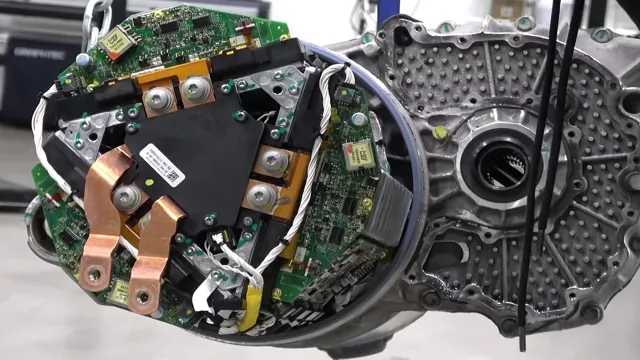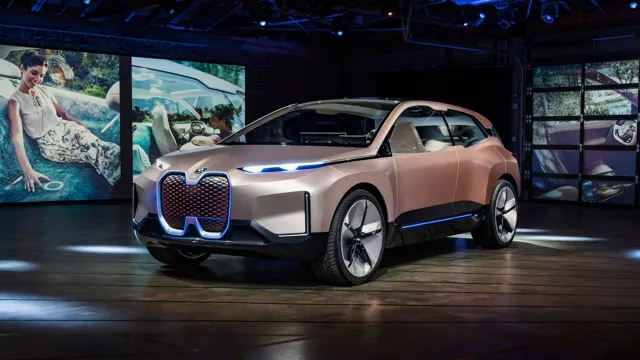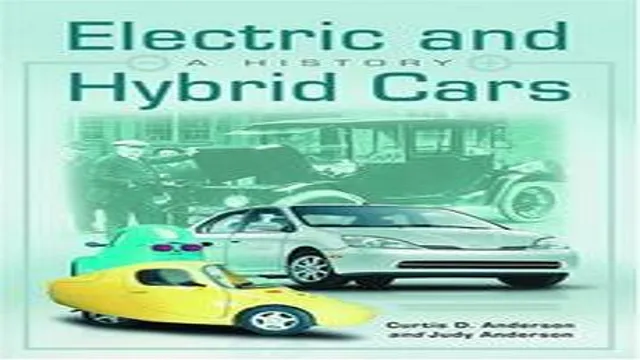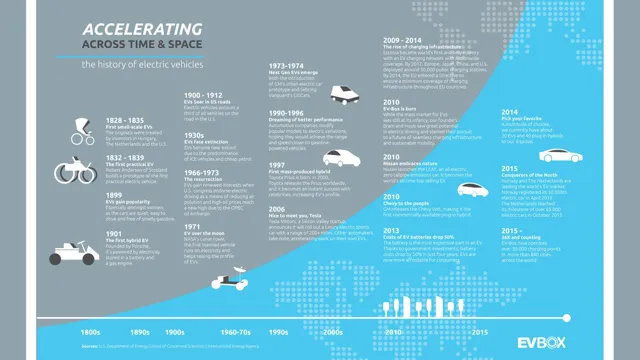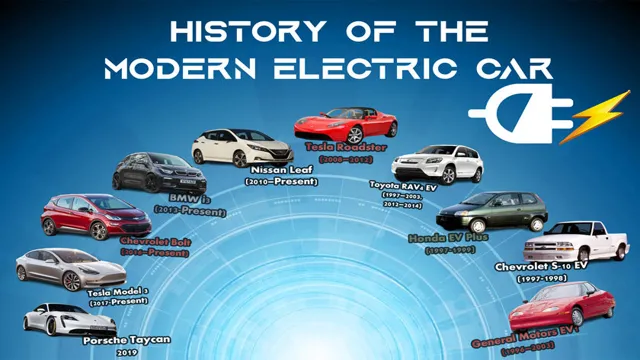The Revolutionary Journey: Tracing the History of Tesla Car’s Electrical Motor!
If you’re someone who’s curious about the inner workings of electric cars, be sure to pay attention to the electrical motor in Tesla vehicles. This motor is an essential component that facilitates the car’s movement, with a complex system of wiring and magnetism. Tesla has designed their electrical motors with efficiency and speed in mind, utilizing technologies such as regenerative breaking to recapture and reuse energy during operation.
Tesla cars stand out from other EVs not only because of their beautiful designs, but also due to the higher performance of their electric motors. Many Tesla models come with dual electric motors that provide power to all four wheels, while also offering instant torque and acceleration without any lag. This makes Tesla’s electric motors comparable to traditional internal combustion engines in terms of sheer power and performance.
Apart from its performance, the use of an electric motor in Tesla cars offers many environmental perks as well. Electric cars have no emissions, which significantly reduces the amount of pollution cars emit on the roads. Moreover, electric cars do not release greenhouse gases that contribute to global warming.
The Environmental Protection Agency (EPA) has given Tesla models some of the highest energy efficiency ratings among electric vehicles, with some models exceeding 400 miles on a single charge. In conclusion, the electrical motor is a major feature that sets Tesla cars apart from other electric vehicles. Tesla has engineered their electric motors to provide maximum efficiency, great acceleration, and top-notch performance.
These factors along with the environmental advantages that electric cars offer, can only serve to bolster Tesla’s popularity among those who care for the environment and demand high-quality automobiles.
Introduction to Tesla Motors
Tesla Motors is an innovative company that is revolutionizing the automotive industry. The history of the electrical motor of Tesla cars dates back to 2008 when the company unveiled its first electric vehicle, the Tesla Roadster. This sleek sports car could travel up to 245 miles on a single charge, and it set the tone for what was to come.
The company has since expanded its product line to include the Model S, Model X, Model 3, and Model Y, each designed with cutting-edge technology and a focus on sustainability. One of the key features of Tesla’s electric motors is their ability to deliver instant torque, providing a thrilling driving experience while also being environmentally friendly. Tesla’s mission is to accelerate the world’s transition to sustainable energy, and their electrical motors are a critical component in achieving this goal.
With advancements in battery technology and continued innovation, Tesla is poised to continue leading the way in the electric vehicle market.
Background and Early Models
Tesla Motors was founded in 2003 by a group of engineers who desired to challenge the status quo of the automobile industry by creating high-performance electric vehicles. The company’s first vehicle was the Tesla Roadster, which was based on the Lotus Elise and debuted in 200 The Roadster was a breakthrough product because it was the first all-electric vehicle that provided a range of more than 200 miles per charge.
Furthermore, it could achieve a speed of 0-60 mph in just 7 seconds. This extraordinary performance made the Tesla Roadster a unique product, bringing a new level of excitement to the world of electric cars.
Following the Roadster, Tesla developed its first sedan, the Model S, in 201 The Model S was the first vehicle to use a large touchscreen display in place of traditional gauges and controls, and it was also the first electric vehicle that could travel up to 300 miles per charge. Tesla’s early models were game-changers for the electric car industry, setting the standard for performance and range that later models would follow.
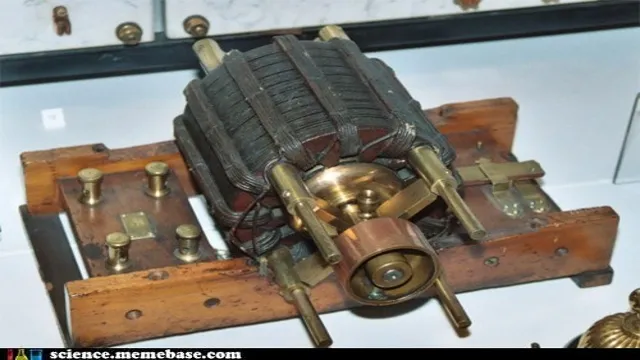
The Roadster and Model S Electrical Systems
Tesla Motors is an American electric vehicle company founded in 2003 with the goal of “accelerating the world’s transition to sustainable energy.” The company’s first two models, the Roadster and the Model S, share many similarities in terms of their electrical systems. Both models use AC induction motors with variable frequency drives, which allow for efficient power usage and longer battery life.
The Roadster features a 53 kWh lithium-ion battery pack, while the Model S has a 60 kWh or 85 kWh battery pack option. These battery packs are made up of thousands of small lithium-ion cells, similar to those found in laptops and cell phones. The Roadster and Model S both have regenerative braking, which captures energy that would otherwise be lost during braking and converts it into electricity to recharge the battery.
Overall, Tesla’s innovative approach to electric vehicle technology has made the Roadster and Model S among the most advanced and efficient cars on the road today.
How the Electrical Motor Works
When it comes to the history of the electrical motor of Tesla cars, it all starts with the genius mind of Nikola Tesla himself. Tesla’s contributions to the world of electricity are almost incalculable, and the electric motor is no exception. Tesla’s AC motor was a game-changer in the field of electrical engineering and revolutionized the way we harness and utilize electrical power.
The motor works by utilizing a series of magnetic fields that rotate around an armature, or rotor, which then turns the shaft of the motor. This rotation creates the movement required to power an electric vehicle. The efficiency and power of Tesla’s motor have helped pave the way for the modern-day electric car and have had a significant impact on the sustainability movement.
It’s truly incredible to think of how one person’s innovations and contributions can have such a lasting effect on society and the future of transportation.
Overview of AC Induction Motors vs. Permanent Magnet Motors
The electrical motor is a complex machine that converts electrical energy into mechanical energy to power countless devices and machinery. There are two primary types of electric motors: AC induction motors and permanent magnet motors. AC induction motors work by inducing an electric current in rotating coils called the rotor that is powered by electromagnets from the stationary part, called the stator.
As the current in the rotor rotates, it interacts with the magnetic field of the stator, creating torque and causing the shaft to spin. Permanent magnet motors, on the other hand, have a fixed magnet in the rotor that interacts with the stator’s magnetic field to create motion. The key difference between AC induction motors and permanent magnet motors is in their construction and how they create and maintain the magnetic fields necessary for operation.
While AC induction motors are more versatile and cheaper to manufacture, permanent magnet motors are more efficient and have a higher power density. Ultimately, the choice between AC induction motors vs. permanent magnet motors depends on the specific needs of the application.
Specifics of Tesla’s Motor Design and Technology
Tesla’s electric motor design is based on a simple yet powerful principle. Instead of using gasoline to power an engine, Tesla’s motors use electrical energy. The motor in a Tesla uses magnets and coils to create motion.
The motor has a rotor, which is the rotating part, and a stator, which is the stationary part. The rotor has magnets attached to it, and the stator has coils of wire. When electricity flows through the coils, it creates a magnetic field.
The rotor’s magnetic field interacts with the stator’s magnetic field, causing the rotor to rotate. This rotation is what creates the motion needed to power the car. One of the advantages of this design is that there are no gears to switch, providing a smooth driving experience.
The principle of the Tesla motor is similar to that of a blender. In a blender, there is a rotating blade that interacts with the stationary jar to produce a blend. In the same way, the Tesla motor uses a rotating rotor to interact with the stationary stator to create motion.
This design is one of the reasons why the Tesla is so efficient and helps set it apart from traditional combustion engine cars.
Benefits and Advantages of Electric Motors in Cars
The electrical motor is the heart of electric vehicles. It works by converting electrical energy into mechanical energy, which drives the wheels of the car. The motor consists of a rotor and a stator, which produce a magnetic field.
The rotor is connected to the wheels of the car, while the stator is fixed in place. When an electric current is passed through the stator, it generates a magnetic field that causes the rotor to rotate. The speed and power of the motor can be controlled by adjusting the amount of current that is fed to it.
Electric motors are more efficient than traditional combustion engines, as they convert a higher percentage of the energy they consume into mechanical energy. This means that electric cars have longer ranges and require less charging than gasoline-powered cars. Additionally, electric motors produce no harmful emissions, making them environmentally friendly and contributing to better air quality.
Overall, electric motors offer numerous benefits and advantages over traditional engines, making them a key component of the future of transportation.
Tesla’s Improvements and Innovations
The history of the electrical motor in Tesla cars is a story of constant improvement and innovation. Tesla has made significant strides in creating electric vehicles that are not only efficient but also luxurious and stylish. One of the key innovations in Tesla’s electrical motor is its use of a permanent magnet motor, which allows for greater torque and a more responsive and efficient drive.
Tesla has also developed its own motor controller, which optimizes the motor’s performance while keeping the vehicle’s battery charged. Another significant innovation is Tesla’s regenerative braking system, which converts kinetic energy into electrical energy to extend the vehicle’s range. These advancements have helped Tesla become a leader in the electric vehicle market and continue to set the standard for technology in the industry.
Higher Efficiency and Power
Tesla is known for its constant strive for innovation and improvement in their electric vehicles. They have implemented various changes to make their vehicles more efficient and powerful. One of the significant improvements they have made is in their battery technology.
The latest models of their cars have bigger and better batteries that provide longer ranges and faster charging times. They have also incorporated advanced cooling and heating systems that optimize the battery’s performance in extreme weather conditions. Another innovation they have introduced is the dual-motor setup, which provides better traction and acceleration.
Tesla has also implemented software updates that optimize the vehicle’s performance regularly. All these improvements and innovations have made Tesla’s electric vehicles more efficient and powerful than ever before, making them a popular choice among electric car buyers.
Reduced Battery Drain and Improved Range
Tesla’s continuous pursuit of improving their electric vehicle batteries has resulted in reduced battery drain and improved range. Tesla’s advancements in battery technology have allowed for electric vehicles to travel further on a single charge, making them a more viable option for daily use. Tesla has implemented various techniques such as improved cell chemistry, better cooling systems, and reducing the weight of the battery packs to increase efficiency and lifespan.
Tesla’s innovation is not only beneficial for electric vehicle owners but also for the environment as fewer battery replacements translate to less waste. The future of electric vehicles is exciting, and Tesla’s ongoing efforts make it clear that they are committed to pushing the boundaries of the electric vehicle industry.
Future of Tesla Motors and Electric Cars
The history of the electrical motor of Tesla cars goes back to the early 2000s when the co-founder of Tesla, Elon Musk, started working on the idea of developing an electric sports car. Musk believed that electric vehicles were the future of the automobile industry, and he wanted to create a car that would be both beautiful and sustainable. The team at Tesla started looking for the best electric motor for their car and eventually developed a proprietary AC induction motor, which is now used in every Tesla vehicle.
The AC induction motor has proven to be highly efficient and reliable, making Tesla cars some of the most popular electric vehicles worldwide. Thanks to Tesla’s commitment to sustainability and innovation, the future of electric vehicles looks bright, and we can expect to see more advancements and exciting developments in the coming years.
Continued Improvements and Expansion Plans
The future of Tesla Motors and electric cars looks bright, with continued improvements and expansion plans on the horizon. Tesla is committed to making electric vehicles accessible to more people, with the goal of accelerating the world’s transition to sustainable energy. They are constantly working to improve their battery technology, with plans to soon release a new battery that will offer even more range and power.
Additionally, Tesla is expanding their charging network, with more charging stations being installed worldwide. In the coming years, Tesla plans to release new models, including a semi-truck and a smaller, more affordable car. The demand for electric cars is growing rapidly, and Tesla is poised to be a major player in the industry for years to come.
Impact on the Auto Industry and Sustainability
The auto industry has been greatly impacted by the rise of sustainable and eco-friendly vehicles, with Tesla Motors taking the lead in this revolution. With their sleek designs and impressive performance, electric cars are quickly becoming popular choices among consumers who are concerned about their carbon footprint. The future of Tesla Motors is bright, as more and more people recognize the benefits of driving electric cars.
Not only are they better for the environment, but they also offer significant savings in terms of fuel costs. As battery technology continues to improve, electric cars will only become more efficient and affordable. In fact, Tesla recently announced their plans to release a new electric semi-truck, which has the potential to revolutionize the transportation industry.
It’s clear that electric cars are here to stay, and with their many benefits, it’s no wonder that they’re quickly gaining popularity.
Conclusion
In conclusion, the history of the electrical motor in Tesla cars is a testament to the power of innovation and determination. From the early days of Nikola Tesla’s revolutionary discoveries to the modern advancements made by the Tesla Motors team, the electric motor has undergone a rapid transformation, all with the goal of creating a sustainable mode of transportation for the future. With its sleek designs and powerful performance, Tesla cars have taken the automotive industry by storm, proving that electric vehicles are not only practical but also thrilling to drive.
As we look to the future, it’s clear that Tesla will continue to push the boundaries of what’s possible, and we can’t wait to see what’s next for the electrifying world of Tesla. So buckle up and let’s enjoy the ride!”
FAQs
Who invented the electric motor used in Tesla cars?
The electric motor used in Tesla cars was invented by Nikola Tesla.
What inspired Nikola Tesla to invent the electric motor?
Tesla was inspired to invent the electric motor after witnessing the inefficiency of steam engines during his work in a power plant.
How has the electric motor in Tesla cars evolved over time?
The electric motor in Tesla cars has evolved over time through advancements in battery technology and motor design, resulting in increased efficiency and range.
What is the power output of the electric motor used in Tesla cars?
The power output of the electric motor used in Tesla cars varies depending on the model, ranging from around 200 horsepower to over 1,000 horsepower.
How does Tesla’s electric motor compare to traditional gasoline engines in terms of performance?
Tesla’s electric motor provides instant torque and smooth acceleration, resulting in superior performance compared to traditional gasoline engines.
